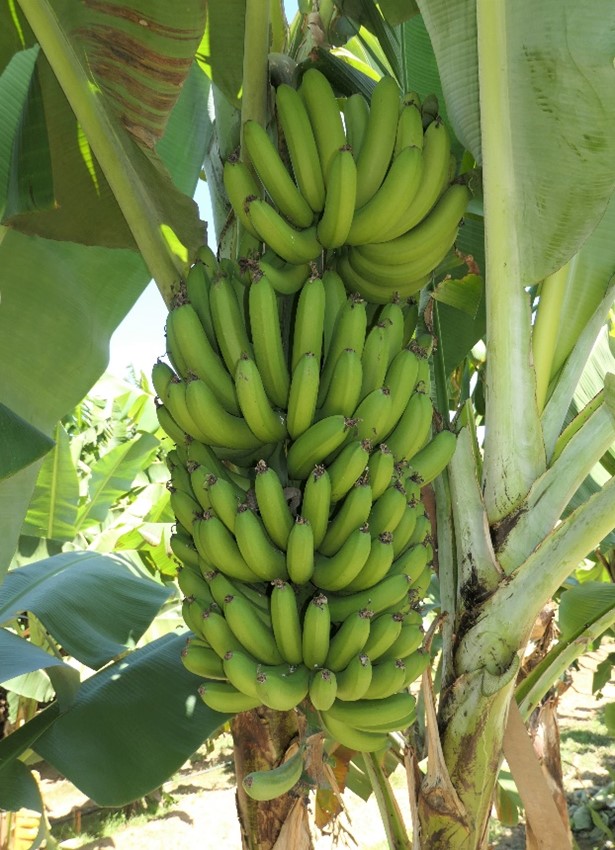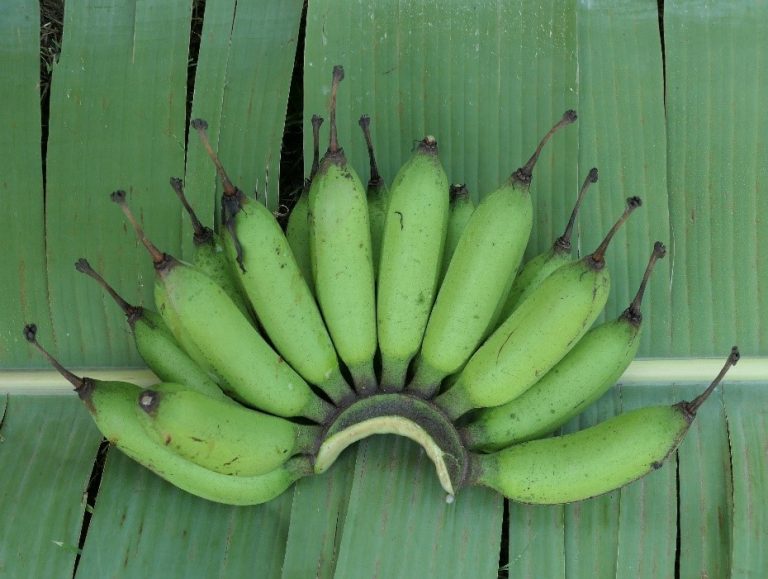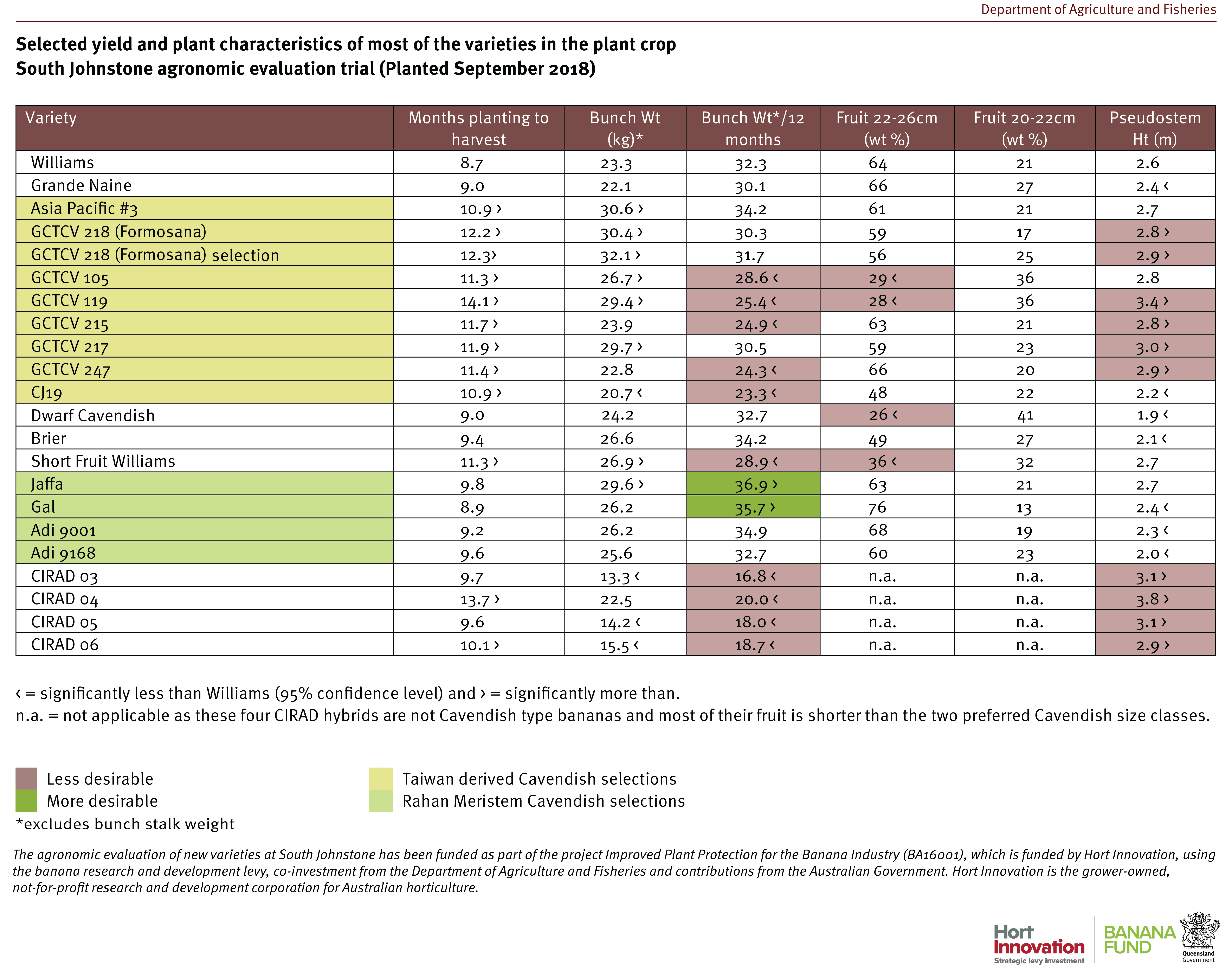Plant crop observations and results (Trial planted September 2018)
Harvesting of the plant crop commenced with Williams in mid-May 2019 — less than 8 months after planting! However, several varieties were much slower in development and harvest of the plant crop continued until the end of the 2019 calendar year. Yield and plant characteristics recorded for the plant crop is available . It is worth noting when looking at these initial observations that this is the first time many of these varieties have been grown in Far North Queensland and the number of plants of each variety included in the screening is quite small. It is also important to keep in mind seasonal effects on the trial’s long harvest period of May to December. For example, winter bunch filling will be slower than summer bunch filling.
Promising varieties based on plant crop observations
All of the Taiwanese Cavendish selections available in Australia are included in this trial. These selections were typically two to five months slower than Williams in the plant crop, however several had heavier bunches. When taking into account bunch weight relative to time taken, there are some promising results with two new selections, Asia Pacific #3 and GCTCV 217 having comparable results with Williams. Two Formosana (GCTCV 218) selections have shown promising results with comparable yields to Williams.



Other Taiwanese varieties yielded from 77 to 94% compared to Williams in the plant crop. Some had significantly shorter fruit, as indicated by the percentage of fruit in the 22-26 cm size category. Depending on the time of year fruit are harvested, this could be an advantage or a disadvantage in achieving more fruit in the desired size range for the market compared to Williams. Several of the Taiwanese varieties were taller than Williams.
Rahan Meristem Cavendish selections
Bunches of the Rahan Meristem Cavendish selections have been impressive, with all four selections being characterised by heavy bunches, long fruit, and good hand separation in the bunch which should help minimise fingertip scarring.
Gal and Jaffa were the only varieties in the trial that yielded significantly higher (per unit time) than Williams. These selections have not been tested against Panama disease TR4 but are not expected to have any resistance.
These selections are owned in Australia by Rahan Meristem and were made available to some growers as part of on-farm evaluations towards the end of 2020.


Other varieties
The dwarf selections of Cavendish, Brier and Dwarf Cavendish both yielded well. However, fruit of Dwarf Cavendish had substantially shorter fruit than Williams.
CIRAD hybrids only yielded 52% to 58% to that of Williams and were 12 to 46% taller than Williams in the plant crop. Their leaf petioles seem quite brittle and under wind often snapped. Fruit of the four hybrids have been tasted by staff at South Johnstone – CIRAD’s 03 & 05 were particularly liked whilst 04 and 06 were probably too fragrant.
A repeat evaluation is underway, as part of the new evaluation established at South Johnstone in 2020 for a few varieties which had a high incidence of tissue culture offtypes in the 2018 evaluation.



Results

More information
This research has been funded as part of the project Improved Plant Protection for the Banana Industry (BA16001), which is funded by Hort Innovation, using the banana research and development levy, co-investment from the Department of Agriculture and Fisheries and contributions from the Australian Government. Hort Innovation is the grower-owned, not-for-profit research and development corporation for Australian horticulture.


